Android Checklist: Setting Up Your New Phone
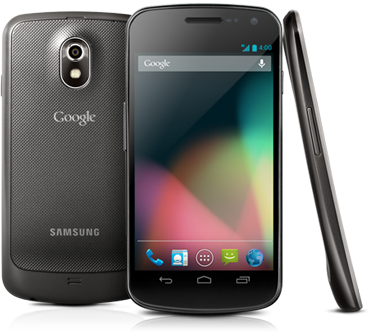
I seem to notice that a lot of people new to Android are confused on what to do with their new phone. I can't blame them since I had the same problem when I had my first Android phone. It's not as straight forward as an Apple iOS device. After recently getting a new phone, I thought I would document the setup process. Hopefully it'll help you get started using your new device. The guide will go through the process of transferring your old data, setting up some security features and maximizing your phone with apps and getting familiar with Android along the way.
Before Using Your Phone
Before we start messing around with our phone, let's perform some steps to make the transition easier. First, setup a Google account if you don't have one. Most if not all of Android is synced with Google services so go ahead and make one already! Next, login to GMAIL. go into the contacts area (see image below). Here, we'll manage your contacts.
[caption id="attachment_769" align="aligncenter" width="300"]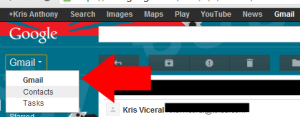 Click this dropdown and select contacts option.[/caption]
Click this dropdown and select contacts option.[/caption]
It's easier to manage our contacts through GMAIL since we have a fully featured browser, keyboard and mouse. In the contacts page, you'll get to add/edit/delete all your contacts. I highly recommend getting and setting pictures for your contacts. Why? It'll show up on your phone later which makes answering calls, emails and messages so much easier. Another tip, the bigger your phone, the higher resolution pictures you should get. Any photo above 250kb should be good enough. Also, choose a photo you can easily associate a person with (no 1x1 family pictures). Where do you get pictures? That's what Facebook is for. Once you have it setup, leave it as is and it'll be automatically imported to your phone.
Then we'll prepare your music, photos and movies. Gather up all the media you want to transfer. Do remind yourself on your phone's storage limit or get a SD card. If your music collection is too large, make a new folder/playlist and just place all your music you'd like to listen to on the go. For movies, don't worry about file formats just get a video player that can handle most formats.
If you have a previous Android phone, you can refer to Lifehacker's guide here. That guide will show you how to backup sms, call logs, app, etc. I don't really want to import most of that information. Most of the things I want to import are just photos/videos so I won't be taking that route. Don't forget to wipe your old phone once your done.
Tip: A great way to transfer all your photos and videos is through [AirDroid](https://play.google.com/store/apps/details?id=com.sand.airdroid&feature=nav_result#?t=W251bGwsMSwxLDMsImNvbS5zYW5kLmFpcmRyb2lkIl0.). More information in the apps section[caption id="attachment_778" align="aligncenter" width="225"]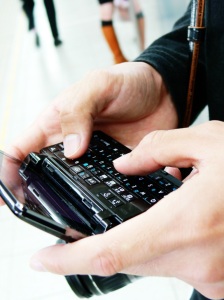 New fangled phone.[/caption]
New fangled phone.[/caption]
Let's Get to the Phone
Now we get to play around with our phone! First step is to power it up. It'll ask you if you have a Google account. Enter your credentials and follow the next steps. Your contacts and email should sync. Congratulations! You're 1/3 of the way done.
Android Updates
Before downloading apps, copying your music, etc it's good to check if there is an update on your phone first. Go to your system settings. Under "About Phone" you'll find "System updates". Check to see if your device has a new update. If one is available, download the update and it will install automatically. As of writing the latest version of Android is 4.1 with the codename JellyBean. Version 4.0 is codenamed Ice Cream Sandwich and might be the one you'll find in an update.
[caption id="attachment_784" align="aligncenter" width="268"]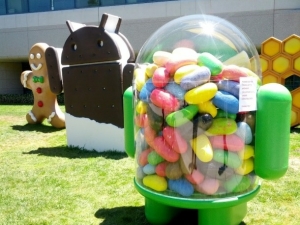 Google has a statue for each version of Android.[/caption]
Google has a statue for each version of Android.[/caption]
Yes, codenames for Android versions are desserts (in alphabetical order). Version 1.5 Cupcake, 1.6 Donut, 2.0 Eclair, 2.2 Froyo, 2.3 Gingerbread, 3.0 Honeycomb, 4.0 Ice Cream Sandwich and 4.1 JellyBean. The only 2 non-dessert codenames are named Astro and Blender. In Version numbers, the first number refers to a "major" update while the second number is a "minor" update. Numbers after those two are generally security or maintenance updates.
Securing your phone and accounts
Securing your phone is always a good idea. Since your smartphone carries a lot of personal data, you should always make sure that only you can access it. The best time to setup some security features is when you get your new device so that you'll learn to use the security features as you learn how to use your device. It won't be as much of a hassle later on.
Android offer's a couple of security features. Regarding lockscreen, you can choose to have either a** PIN, slide or pattern unlock**. PIN and pattern both have their pros and cons. PIN would make you memorize yet another "password" and NO, you shouldn't use the same one as your PIN on your bank card. Pattern unlock is a newer method that uses (surprise surprise!) pattern combinations. The downside to pattern unlock is that if your screen has smudges it can be a bit easier to guess what your pattern is. No, don't use slide unlock unless you only keep your phone in your room.
Tip: You can choose to have a PIN plus an application shortcut with WidgetLocker. See the app section for more info. From Android 4.0 (codenamed Ice Cream Sandwich(ICS)) and above, there is now an **option to encrypt your device**. I'll spare you the [giberish](http://en.wikipedia.org/wiki/Encryption) by just saying that encryption is one of the ways you can protect your phone from unauthorized snooping. Every phone has a different settings menu so explore the settings. In a Nexus phone, under "Personal" you'll find encryption under security. The encryption process takes some time so charge your phone and leave it for about an hour.While we're talking about security, it's good to enable** 2 factor authentication** on your GMAIL. What is this voodoo I speak of? Basically, besides your password, you'll need a code generated by your phone to be able to access your GMAIL on computers/devices you don't use. Read about it here or watch the video below.
[youtube=http://www.youtube.com/watch?v=zMabEyrtPRg&feature=player_embedded]
Remember that you should treat your email like how your bank secures money. Always keep it safe and secure. Remember all those "forgot password" options? Once someone has your email, it will be easy to access all your accounts. There are tons of tips regarding security. I wrote an old post about it (outdated). Have your email password easy to remember but hard to guess. I find passphrases to be a great solution.
Lastly, if you have too many username and passwords to keep track of. Try using a password manager. Think of it as a place where you can store all your username and passwords. That sounds insecure? Different password managers have different features. Usually you need a master password to get access to it and in some cases you can always carry your "file" with you. I recommend keepass. There's also an app to access your "file" on your phone. (More info about password managers in another post).
Getting Familiar with Your Phone's Features
In your settings, you can find most of your phone's features. I suggest looking into the categories to see what you have. Since you'll probably use your virtual keyboard a lot, it's best to see what things are available. Check to see what you want in your keyboard. There are things like auto-correct, auto-suggest, swipe, other languages and more. Try the keyboard out on your SMS/Messaging application to see what you prefer.
From version 4.0 ICS and onwards a data usage/monitoring is available. It's great to setup a warning if you have a data limit on your post or prepaid plan. You can also see what apps are eating up the most data. While we're on data, you might or might not know that you can use your data plan and share your connection to other devices. You can use your device as a "wi-fi router" (Wireless and Networks > More settings). Remember that if you're on your laptop, it's very very easy to eat up data and you might burn get passed your limit if you frequently use your phone's data plan. Near Field Communications (NFC) might be available on your phone. NFC is a newer technology that will allow you to do things like use your phone as a credit card and "tap" it to a machine or transfer photos and videos to another device. See the Android Beam and Google Wallet demo below. If you don't think you'll be using it then disable it.
[youtube=http://www.youtube.com/watch?v=nCw1ilMzCH4]
[youtube=http://www.youtube.com/watch?v=DsaJMhcLm_A]
Depending on your phone, you can also change the device's font. I find the default font for Nexus devices really great (it's called roboto). On my new device, sadly the default font looks terrible but luckily there was at least an option to use Helvetica. Fonts and font sizes might sound like a non-trivial thing but remember that you're always reading things on your phone. Whatever you pick is good as long as it's not comic sans.
You can also manage your installed applications under the creatively named "Applications Manager" or "Apps". A notice and warning to new users. Depending on your device, check to see whether there is an option to install to sdcard/external memory. In older versions, Android's default settings does not install in the external memory. What this means to us users is that, it will eat up your phone's internal memory which is a bad thing. If there is an option available, get the habit to choose to "move to external memory" after you install a new application.
In the "storage" option in the settings, you can see an approximate measurement of the amount of data being used on your phone by a particular category. For example, photo's take up 1 GB. It's a great way to keep track and manage your phone. The "sound" option might not sound appealing before you realize that Android has a different way of handling volumes. There are 3 volume types which are music and other media, ringtones and notifications and lastly alarm. It might sound weird and actually it is but there are some good things about it. You can choose to have light sound for your music and an annoyingly loud one for your morning alarms.
[caption id="attachment_781" align="aligncenter" width="300"]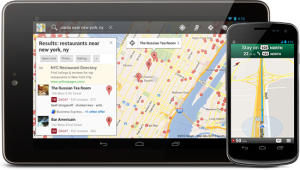 Maps and Navigation is nice. Running out of battery is not.[/caption]
Maps and Navigation is nice. Running out of battery is not.[/caption]
Android Basics
If you've used another smartphone, you might think Android is very different because it is. Android is a little more like Windows and Linux than say iDevice. One of the things you'll notice is that Android has "homescreens" which is well..a desktop. You can place shortcuts and widgets. Widgets are little programs that live in your desktop (useful for things like clocks, calendars or weather updates). Unlike Windows, you can have more than one desktop. You can customize each one to have a specific use (music, news, social media updates). Down below is the "dock" or launcher. It's a set of shortcuts for your commonly used applications.
[caption id="attachment_789" align="aligncenter" width="300"]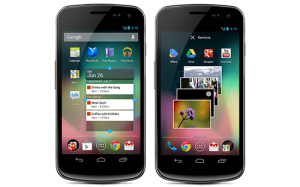 Android Widgets[/caption]
Android Widgets[/caption]
One thing you might need to familiarize your self is with the "Long press". If you press and hold something, it will usually show more options or allow you to do something. In the homescreen if you long press an empty space, a popup dialog will appear asking if you would like to place a shortcut or widget. If you long press a conversation in SMS, you get the option to delete the thread. Along with the "long press" there is also the menu button. The menu button as the name suggests gives you a menu. Usually it's for settings. Newer devices will not have menu buttons as it's being deprecated. The menu button is being replaced by a menu button inside the apps themselves.
Notifications. Another important concept to know is the notification. Instead of bombarding you with popups, Android has a place for all notifications. You can access it by swiping your finger down from the top of the screen. Here you'll see updates like new SMS, Email messages, running applications and more. Finally, there is multitasking. Android allows you to switch between applications. You can long press the "home" button (the house-looking icon) you'll see a list of recent applications. You can select one and you'll switch to that application. Also, you can swipe it left or right to stop or "kill" a running application.
There are a lot more features in Android. Here is a couple of highlighted features.
Apps
Apps or applications are programs you can use on your phone. Just like in your computer, there are tons of programs available to download and use. Below is a list of applications I commonly use and would recommend (organized by category). I would like to remind you that you should try and download only from well-known developers. Generally speaking, it's better to trust a known developer/company than some random developer. (Although not always the case, as with what happened when LinkedIn application got hacked and did not store passwords securely). Always be careful on what you install.
**Manage content. **Use these apps to manage and save your files.
- Dropbox One of the long running cloud services, Dropbox allows you to save and retrieve your files on the could. The app also allows you to automatically upload your photos in the could (Great backup tool). Only con is that you start with only 2GB which is good for documents but not photos and videos. If you decide to register, feel free to use my referral link http://db.tt/K9XZyjb. I also wrote a bit on Dropbox here.
- Airdroid Do you hate using USB to transfer files? You don't need to anymore. This app allows you to manage your phone and its contents wirelessly. Check the link to see all the cool features. This is probably the application I recommend the most.
- Astro File Manager By default, Android does not ship with a file manager. You can use this application just as you would with Windows File Explorer. It even works as a plugin/option when you need to select a file from your phone.
- Google Drive / Google Docs I normally wouldn't recommend an alternative to Dropbox because it would be redundant. Google Drive is a cloud storage but what makes it unique is that your Google Docs are stored here. If you use Google Docs then you need to use drive.
[caption id="attachment_791" align="aligncenter" width="179"]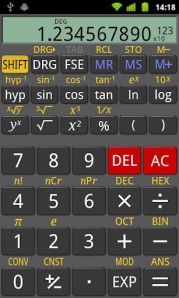 Would you download a scientific calculator app for you phone? Of course you would.[/caption]
Would you download a scientific calculator app for you phone? Of course you would.[/caption]
**Essential tools. **Here are some applications which I think are pretty useful for certain tasks.
-
Swiftkey keyboard The default ICS keyboard is great. The default one on a Samsung TouchWiz device is not though. I've been trying this out for a couple of days and I think its pretty amazing. It learns from your common words, typing with swipe, customizing with themes, predictive text and more. The biggest downside is that its about $4 CAD.
-
MoboPlayer Don't convert your videos just use this instead. Its a video player for formats that your default video player might not support. I saw an alternative (MX Player) which has a nicer interface but I haven't use it.
-
RealCalc is a scientific calculator app. Why or rather why not?
-
Chrome or Opera/Dolphin. The stock browser before version 4.1 is just slow. I would recommend Chrome to everyone but it's only for phones on 4.0 or above. You can use Opera or Dolphin as an alternative.
-
UberMusic The stock music player on Android is great but this app has a nice UI. It's similar to Zune player on Windows (not the dead Zune Player). Its like Windows 8 metro and can search pictures of the artist. Be warned, it's a paid application and the developer has not updated for a while.
-
Any.do Probably the best and sleekest to-do application manager out there. You can also create an account and sync your to-do list on your browser. Its a well designed and intuitive application.
-
Alarm clock extreme A feature-packed alarm clock app. You can set the tone to gently wake you up, solve math problems to deactivate and more.
-
Juice defender Almost any smartphone has terrible battery life. This solves your battery problems by things like disabling connectivity when you turn off the screen, syncing every set amount of time and more.
Social and Communication -
Instagram Although regarded as hipster-ish and has a brutally small filesize, it is still one of the easiest ways to share photos..
-
Viber Allows you to call, text and send photos. Its free and uses your phone number as a user number so you won't need to keep another username and password. Disappointingly terrible after each update and crashes on new versions of Android. Alternative is G+ messenger or What's App.
[caption id="attachment_792" align="aligncenter" width="300"]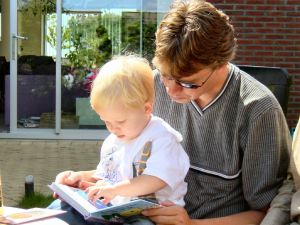 This is what we used way back in my time. We called it "books".[/caption]
This is what we used way back in my time. We called it "books".[/caption]
News and reading
-
Pulse News It's a news reader similar that focuses showing a lot of available news. Good UI and available "night" mode.
-
Instapaper Another reader. Its great to pair with Send to Instapaper on Chrome. When you see an article you want to read later. Click the button on your browser then read it later on your phone.
-
Perfect viewer If you're transferring comics or manga on your phone and not buying it through a particular app, this is the best reader.
-
Aldiko Decent ebook reader.
Writing -
Pad Text editor with a night (white on black) mode but can only save one note.
-
mNote Simple notepad. Sometimes that's all you really need.
-
Springpad If you've used SpringPad on the web then this is their mobile app. Great for syncing bookmarks, notes, recipes and more.
-
Google Docs (is now Google Drive)
Location apps -
Yelp Find stores, restaurants, etc near you. Ratings and reviews based on user reviews.
-
Transit Toronto The app that shows the Toronto bus schedule. Also has cool features like showing buses near your current location. The developer is constantly updating and adding more cool stuff.

Sports
-
Endomondo. If you run, this is a great companion. Keep track of your stats and routes. You can also share your stats to Facebook and Twitter and make your friends feel impressed.
Other -
G authenticator Connect it with your Google account. You need to input code shown in the app to be able to access Google services from a new computer.
-
UnifiedRemote I was going to link to Gmote an older application that allowed you to use your phone as a trackpad/mouse and keyboard and control media player but Unified Remote seems better. From the feature list, it has remotes for Chrome, Windows Media Player and more on your desktop.
Way More Out There
There are tons more applications out there. Explore the play store along with other blogs to see some applications that you find useful. For mobile games, that would probably need an article all to itself. If you're interested in reading a bit on customization, you can read my previous article here.
That's it. I hope this helps you get started using your Android device. Enjoy!